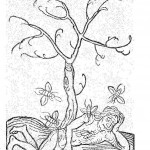Both Publishers Weekly and Kirkus Reviews, whose reviews inform the purchases of bookstore buyers, have nice words for The Fever. PW calls the book “fascinating, mordant” and “absorbing,” while Kirkus calls it a “sobering account” with “important lessons.” Excuse me for focusing unduly on the praise. I should add that they both also give typically concise summaries of the book, which should prove useful for interested readers. The full reviews are here (Publishers Weekly) and here (Kirkus).
Category: The Fever (Page 3 of 4)
An op-ed I wrote about a forbidden topic–the fact that many rural Africans do not want to sleep under the bednets we donate to them–appeared in this weekend’s Los Angeles Times. A prominent malariologist had this to say about it: “Excellent story – finally someone that dares to speak up. Mind you, your death sentence has been signed in Geneva by publishing this. You’ll be hated by the die-hard believers of nets…”
Perfect. That’s the kind of feedback that makes me feel like I’m doing my job. Check it out on this site, or at LA Times.
Also, in honor of last week’s World Malaria Day, see my article on greener methods of malaria control at Yale e360, and my blog post on the folly of square bednets for round huts at Ms. Magazine.
Some very much appreciated early praise for The Fever! Bart Knols had this to say:
“Extremely well-researched, The Fever provides a highly gripping account of one of mankind’s worst diseases…Highly recommended.” –Malariologist Bart Knols, Managing Director, MalariaWorld
Bart runs MalariaWorld, which he has recently turned into a dynamic forum for malaria scientists and others interested in the disease. And he’s blogging about it for TH!NK 3.
And the renowed malaria expert Malcolm Molyneux added this:
“A thrilling detective story spanning centuries, about our erratic pursuit of a villain still at large and still a threat to mankind…Rich in colorful detail and engagingly told…An astonishing array of characters have joined the fray, and you can only be amazed at the deviousness and skill of the arch-enemy.”–Professor Malcolm Molyneux, Liverpool School of Tropical Medicine, WHO expert panel on malaria
Molyneux, who was also kind enough to review the book for accuracy, is a huge figure in malariology. He led the Garki Project, a seminal study on the possibilities of malaria eradication in Nigeria, in the 1960s and 1970s. And he established an internationally renowned malaria research center in Blantyre, Malawi, in connection with the Wellcome Trust and the University of Malawi. A paper dedicated to his life and science recently appeared in the Transactions of the Royal Society of Tropical Medicine and Hygiene.
How did the daughter of Indian immigrants, with zero connections, get in touch with these esteemed personages, you wonder? Well, ninety-nine percent of my reporting relies on the kindness of strangers. But in the case of Molyneux I had a helpful connection. My old friend from South End Press, Loie Hayes, is related in some complicated way to Terrie Taylor, who is probably the world’s top pediatric malaria expert. Through Loie I got in touch with Terrie, who became a major source for The Fever. I shadowed her for about a week in Malawi, which was amazing. And Terrie connected me to Molyneux, who is a senior colleague of hers.
Much gratitude to Knols and Molyneux for their kind words!
I had a lovely conversation with Philip Adams of Australia’s national public radio program “Late Night Live” today, about malaria, the fall of Rome, and the bother of mosquito nets. You can check it out here.
For Ms. Magazine. Ms. holds a place near to my heart for being the first national magazine that published my writing, way back in the early 1990s.I will be occasionally blogging for their new Ms. blog (which makes me, ahem, “Ms. Blogger”). Here’s a link to my first post, on how a Microsoft exec’s recent TED lecture exploits the suffering of millions of African women and children:
http://msmagazine.com/blog/blog/2010/03/08/ted-lecturer-exploits-african-womenchildren/
Check it out, make a comment, let me know what you think!
The Malaria Consortium is putting on a 8-week exhibition of photographs featuring malaria at the UN headquarters in New York in advance of World Malaria Day on April 25. This weekend, the New York Times featured a selection of the photos, with a brief article on the history of the scourge. Check it out here.
The captions on the photos are the best part. Note that the mosquito-catching technique featured in slide 5 is pretty controversial. Using humans as live bait for malarial mosquitoes can certainly endanger them. I also found the quote on slide 9, which pictures two Nigerian children recovering from malaria (mostly naked, on a shorn mattress), quite telling. The father of the children describes their illness and treatment and then says, “It is not that we are not concerned, it is just normal.” A hint of the social reality of malaria in Africa, where people think of malaria the way we think of the flu–completely undermined by the story told by the dark, shadowy photograph alongside it.
Add King Tut to the list of famous personages felled by malaria. Tut died at age 19 in 1324 BC. According to a new study in JAMA, scientists have found genetic evidence of Plasmodium falciparum lurking in his mummy.
Tut’s a famous guy but he isn’t malaria’s earliest known victim–not by far.
Tut died some two thousand years ago. In 1994, scientists found antigens to plasmodium parasites in 5,000-year-old Egyptian and Nubian mummies. Check it out here. References to malaria have also been found in 4,000-year-old Sumerian and Egyptian texts. But we know malaria’s been a much older scourge than that, thanks to molecular clock techniques that analyze the parasite’s genome. We’ve probably had it since we descended from apes.
<a name=”fb_share” type=”button_count” share_url=”http://soniashah.org/2010/02/malaria-killed-king-tut-among-other-ancients/” href=”http://www.facebook.com/sharer.php”>Share</a><script src=”http://static.ak.fbcdn.net/connect.php/js/FB.Share” type=”text/javascript”></script>
So my new book is now officially titled, “The Fever: How Malaria Ruled Humankind for 500,000 Years.” Hoowee! Meanwhile I’m working on a new piece on emerging infections from animals (called “zoonoses”), such as Ebola, Nipah virus, Hanta and West Nile. It’ll be appearing in a cool new online enviro magazine called “e360” which features some of my favorite writers–Carl Zimmer, Elizabeth Kolbert and others. Check it out at e360.com
Thrilled to announce that my new book on the political history of malaria has been completed and is slated to come out from Farrar, Straus & Giroux in the late spring of 2010! Check here for more details, forthcoming. Tentative title: “The Half-Million Year Fever: The Story of Malaria.” Got a better idea? Email me at sonia@soniashah.com.
My op-ed reflecting on World Malaria Day (April 25) appeared on Alternet, Z Net and on The Mutiny. Enjoy!














